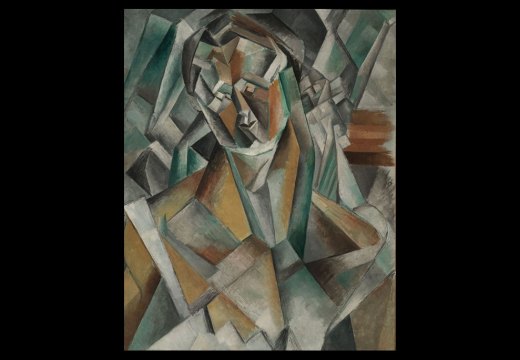In a world where art auctions often become spectacles of inflated prices and exaggerated excitement, one cannot help but question the true worthiness of certain pieces. This is particularly relevant when it comes to Pablo Picasso’s iconic Cubist portrait, which has recently caused quite a stir in the art market. While many experts and enthusiasts are quick to proclaim its brilliance, it is essential to delve deeper into the artwork’s significance and determine whether it genuinely lives up to the hype.
A Deeper Look at Picasso’s Cubist Masterpiece
Picasso’s Cubism movement revolutionized modern art by challenging traditional notions of representation and perspective. His ability to deconstruct forms and reconstruct them in fragmented ways was groundbreaking during his time. However, as we analyze this particular portrait, we must consider whether it showcases Picasso’s innovative techniques or merely serves as an emblematic representation of his style.
The painting itself presents a distorted image that requires viewers to decipher multiple angles simultaneously. The use of geometric shapes and abstracted features adds complexity while inviting interpretation from those who engage with it. Yet, does this complexity truly contribute something profound or simply serve as an intellectual exercise for art connoisseurs?
Unraveling the Hype Surrounding Picasso’s Portrait
It is undeniable that Picasso holds an esteemed place in art history due to his immense talent and influence on subsequent generations of artists. However, does this automatically mean that every piece he created deserves astronomical price tags? The auction-house frenzy surrounding this particular portrait seems more driven by brand recognition than genuine appreciation for artistic merit.
Furthermore, one must also consider how accessibility plays into our evaluation of artworks’ value. While some may argue that exclusivity enhances desirability within the art market, it also perpetuates a system that alienates those who cannot afford to participate. In the case of Picasso’s Cubist portrait, its exorbitant price tag may overshadow the importance of making art accessible and inclusive for all.
Reevaluating Our Perception
As we navigate through the world of high-stakes auctions and inflated hype, it becomes crucial to reevaluate our perception of artistic value. While Picasso’s Cubist masterpiece undoubtedly holds historical significance and showcases his innovative techniques, we must question whether it truly deserves the overwhelming attention it receives in auction houses.
The true worthiness of an artwork lies not only in its creator’s reputation but also in its ability to evoke emotions, challenge conventions, and contribute meaningfully to society. By shifting our focus from sensationalism to substance, we can foster a more inclusive environment where diverse voices are celebrated and valued.
In Conclusion
Picasso’s Cubist portrait may be hailed as a masterpiece by many within the art world; however, it is essential for us to critically examine whether this accolade is justified or merely a result of auction-house frenzy. By questioning conventional wisdom and considering factors such as accessibility and inclusivity, we can redefine how we perceive artistic value beyond monetary figures alone.

